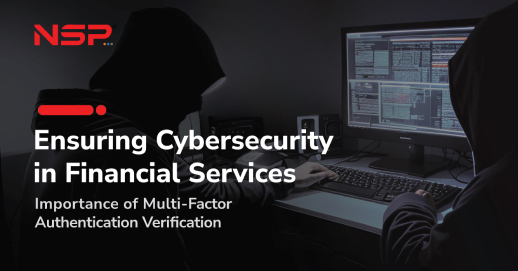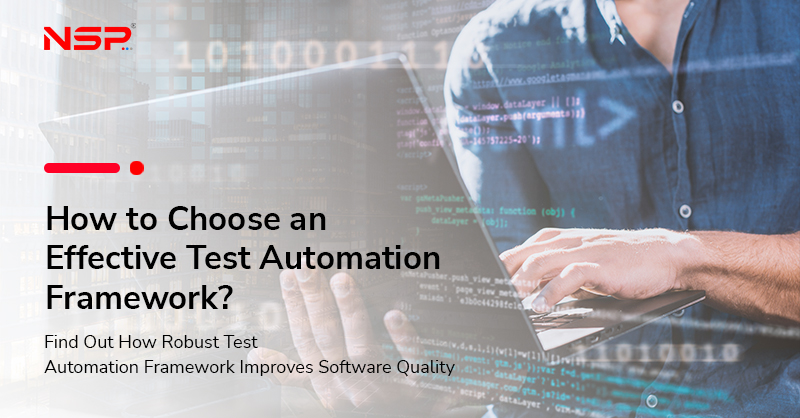Securing financial services: Role of MFA Verification
admin
October 23, 2023
Security Services
As per the projections, cybercrime is predicted to cost the global economy $10.5 trillion by 2025, up by a 15% increase year on year. Businesses have never been more vulnerable, and more so are the financial services businesses. According to external market data, the financial sector was the most attacked in 2022 by DDoS attacks and a data breach in the financial services industry typically costs around $5.85 million, and ten percent of all attacks are financial breaches.
With the rise of the digital economy and the surge in online transactions, the financial industry has seen a significant increase in cybercrimes against financial institutions. These cybercrimes not only cause financial loss but also erode user trust. To combat this, financial organizations need to stay ahead of fraudsters with robust cybersecurity measures. This is where Multi-Factor Authentication (MFA) verification comes in.
As the digital landscape continues to expand, the global economy faces the daunting challenge of cybercrime, which is projected to cost a staggering $10.5 trillion by 2025. Among the sectors most vulnerable to these malicious activities are the financial services businesses.
In fact, recent market data reveals that the financial sector experienced the highest number of cyberattacks in 2022, with Distributed Denial-of-Service (DDoS) attacks and data breaches posing significant risks. The consequences of such breaches can be financially devastating, with an average cost of $5.85 million per incident. But fear not, there is a powerful solution that can help protect sensitive financial information and maintain user trust: Multifactor Authentication (MFA).
In this article, we'll explore the importance of MFA in the financial services sector, and why it's become the industry-standard solution to keep sensitive financial information safe.
What is Multi-factor Authentication (MFA) Verification?
Multi-factor Authentication (MFA) Verification is an authentication method that requires two or more independent verification factors to gain access to an online account or a VPN. Security verification is a combination of three factors:
- Credentials - Username or password
- Authenticator apps: verification codes sent to email accounts, smartphones, security tokens, or other authenticator apps.
- Biometric Identifiers - These include facial patterns, fingerprints, and iris scans.
MFA combines credentials, such as your password, with physical items, such as a mobile phone or smart card. The password and username that you use to log into your bank account will be required as usual. However, with MFA, you must also provide a second form of identification. This could be a unique code sent to your mobile phone, a fingerprint scan, or a smart card.
Why Multi-factor Authentication (MFA) Verification is Important for Online Banking?
MFA is essential for online banking because it adds an extra layer of security to your account. With MFA, even if a cybercriminal manages to steal your username and password, they will still need a second form of identification to access your account. This makes it much more difficult for cybercriminals to access your bank account and steal your money.
A majority of financial institutions, including banks, have adopted multifactor authentication (MFA) along with strict security policies in order to ensure customer trust. It is important to strike the right balance between usability and security when adopting an identity and access management (IAM) strategy.
Advantages of using MFA in online banking:
1. Adds an extra layer of security to your bank account- By requiring users to provide additional authentication factors such as a password, security token, or biometric verification, MFA adds an extra layer of security to online banking. This makes it more difficult for cybercriminals to gain access to users' accounts, as they would need to bypass multiple security measures to do so.
2. Protects against phishing attacks and other cyber threats- Phishing attacks are a common method used by cybercriminals to steal users' login credentials and personal information. MFA helps protect against phishing attacks by requiring users to provide an additional authentication factor, making it more difficult for attackers to gain access to users' accounts.
3. Provides peace of mind knowing that your bank account is secure- Online banking can be stressful, as users may worry about the security of their accounts and personal information. MFA provides an additional layer of security, giving users peace of mind knowing that their accounts are more secure.
4. Helps prevent fraudulent activities such as unauthorized transactions - MFA can help prevent fraudulent activities such as unauthorized transactions by requiring users to provide additional authentication factors. This makes it more difficult for attackers to make unauthorized transactions, reducing the risk of financial loss.
5. Reduces the risk of identity theft and financial loss - By adding an extra layer of security to online banking, MFA helps reduce the risk of identity theft and financial loss. This is particularly important as online banking becomes more popular, and cybercriminals continue to develop new methods to steal users' personal information.
6. Assuring and increasing the trust of end customers and financial institutions - This can be achieved by adhering to the highest standards of security protocols and implementing the latest technological advancements in security systems. Additionally, the company should ensure that the customer's data is kept secure and confidential at all times.
Securing Your Bank Account: A Closer Look at How Multi-Factor Authentication (MFA) Works for Customers
When customers log into their bank account, they are prompted for a Customer ID or Account No and a password which identifies them as account owners and forms the first layer of authentication allowing them only to log in to their account.
However, to access their account as an additional authentication measure, the user must provide at least one of the other two supporting documents. Most banks ask for a verification code sent either to a registered email ID or via OTP SMS to your smartphone. Each time, a new code is generated based on a seed value assigned to a user at first registration, an incremented counter, or a time value.
When customers withdraw money from an ATM as part of MFA implementation in addition to an ATM card - something you have, to access their account, a PIN that is associated with the debit /credit card is also needed - something you know.
One of the best ways to implement MFA is the biometric authentication route. It is not common practice yet for banks and investment firms to use voice recognition which identifies voice based on accent, speech rhythm, and vocabulary when customers opt for telephone banking, however, IVRS is more prevalent. Irrespective of the method of authentication, requiring a second authentication step to access an account can impede any fraudulent attempt to access accounts with compromised credentials.
Protecting Sensitive Data: The Role of Multi-Factor Authentication (MFA) in Bank Systems and Employee Access
Bank employees/systems handle sensitive customer data hence the implementation of an MFA for employees/systems goes a long way in preventing frauds, phishing, and other targeted attacks. MFA for employees and systems, at least for the critical resources like core banking systems and transaction/application databases in addition to Windows/banking applications/VPN.
MFA Implementation: Common Challenges and Solutions
Even though MFA is widely accepted in banking circles it is still an uphill task for successful implementation. Some of the factors that have hindered IMA include:
Challenges
- Complex MFA practices may hinder workflow hence employees may bypass MFA.
- Poor user experience may result in rejection of MFA.
- MFA might fail when there is no internet.
- SMS/ emails can be hacked or intercepted.
Solutions
- One-Time Passwords (OTP): OTPs are generated for a specific session or transaction and are usually valid for a short period. They can be sent to the user's email, SMS, or generated by a software or hardware token. OTPs add an extra layer of security as they are time-limited and cannot be reused.
- Biometric Authentication: Biometric authentication uses unique physical or behavioral characteristics such as fingerprints, face, iris, voice, or signature to verify a user's identity. Biometrics are difficult to replicate, making them a secure form of authentication.
- Smart Cards: Smart cards are credit card-sized devices that contain an embedded microchip that stores user data. They are used in conjunction with a PIN or password to authenticate users.
- Security Tokens: Security tokens are physical devices that generate a unique code for each login attempt. They can be USB or Bluetooth-enabled and require the user to enter the code in addition to a password or PIN.
- Push Notifications: Push notifications are sent to the user's mobile device to confirm their identity. The user must approve or deny the request to complete the login process.
- Knowledge-based Authentication: Knowledge-based authentication uses questions that only the user can answer to verify their identity. For example, "What is your mother's maiden name?" or "What was the name of your first pet?"
- Behavioural Biometrics: Behavioural biometrics analyze the user's behavior and patterns, such as typing speed, mouse movements, and scrolling behavior, to determine their identity.
It's important to note that no single MFA solution is perfect, and each has its own strengths and weaknesses. A combination of two or more solutions can provide an additional layer of security and reduce the risk of unauthorized access.
Takeaways
Since most often passwords are reused and can be easily compromised MFA can protect your business from unnecessary risk. Hence it is imperative that MFA is adopted, as security is an important part of modern banking cybersecurity.
With years of experience in Multi-Factor Authentication implementation, Our agile team has a strong hold on technology integration and is recognized as a trusted solution provider for Identity Management systems. We provide our services to the highest security standards while being cost-effective. Our experienced team of experts will ensure the best outcome for your business. In addition, our state-of-the-art solutions guarantee maximum protection against potential malicious attacks and unauthorized access. Contact our experts today at reachus@nsplustech.com. Our team of specialists can provide 24/7 assistance for any inquiries or issues you may have. We strive to provide the highest quality of service to ensure your business runs smoothly and securely.
Without MFA, businesses are vulnerable to security breaches and other cyber-attacks, which could have a devastating impact on the company. Therefore, the implementation of MFA is essential for any company to ensure their security and data are protected. Let us help you protect your data.
Previous Post
Digital Transformation as a service
Recent News artical
Fresh job related news content posted each day

October 23, 2023
Digital Transformation as a service
Today Digital Transformation As a Service (DXaaS) is a popular choice for...
Read more
October 23, 2023
Securing financial services: Role of MFA Verification
As per the projections, cybercrime is predicted to cost the global economy...
Read more
October 23, 2023
How to choose an effective test automation framework?
In today's fast-paced software development industry, having a reliable and efficient automation...
Read more